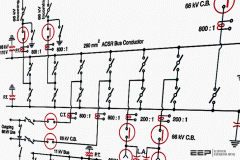 In the past, most homes with solar electric systems were not connected to the local utility grid. It made sense to install solar electric systems in areas without easy assess to the power grid, where the option of extending a power line from the grid might cost tens of thousands of dollars.
In the past, most homes with solar electric systems were not connected to the local utility grid. It made sense to install solar electric systems in areas without easy assess to the power grid, where the option of extending a power line from the grid might cost tens of thousands of dollars.
In recent years, however, the number of solar-powered homes connected to the local utility grid has increased dramatically. These “grid-connected” buildings have solar electric panels or “modules” that provide some or even most of their power, while still being connected to the local utility. Owners of grid-connected homes can choose to supply a portion of their energy with solar energy, using the utility for power during the night or on cloudy days. Because of the up-front costs of installing a solar electric system, many of these homeowners initially install systems that meet about onequarter to one-half of their energy use.
Solar electric systems sometimes produce more electricity than your home needs. This extra electricity is either stored in batteries or fed into the utility grid. Homeowners can be given credit by their local power companies for the electricity produced at their homes through “net metering” programs.
Net metering

Grid-connected systems generally use a billing process called “net metering” or “net billing”. In this process, any energy generated by the solar modules that your home does not use immediately is sent to the utility grid.
However, when the solar electric system is producing less power than is needed, you can draw additional power from the grid. If your system is connected to the grid through a single electric meter, your meter can actually run backwards as you contribute excess energy to the utility.
The excess electricity is being credited to you at the same retail rate as the electricity you use from the utility. Your utility may require the use of two meters—one that meters your consumption of energy from the grid and the other that meters your contribution to the grid. In this case, your solar-generated excess energy could be credited at the retail rate or possibly at a lower wholesale rate, depending on the utility.
In addition, some utilities bill their customers according to a “time-of-use” rate system. Under this system, customers are billed at a higher rate during certain times of the day, such as during the sunniest daytime hours of summer when air conditioners are working at their peak. If this is the case with your utility, you may be able to “trade” your excess energy to the utility at these same rates.
You can therefore benefit from the fact that your solar electric modules produce the most power during those sunny summer days. When you need power from the utility during the off-peak periods, such as in the evening, the rate is usually lower. If you choose to have a grid-connected solar electric system, and your system produces enough energy in any given month so that you do not have to draw from the grid, you may still receive a small monthly bill. This is because many utilities charge monthly fees for meter reading. Again, check with your local utility.
Connecting to the grid
One of the most important steps in purchasing a grid-connected solar electric system is choosing a provider with experience. A good provider will also have a properly licensed electrical contractor, have enough years of experience to have demonstrated an ability to work with customers, and be able to compete effectively with other firms.
Your solar electric provider should supply you with everything you need to run your system, including a specific type of inverter for grid-connected systems, batteries (if you want backup power), and a special electric meter. As mentioned already, some utilities require you to have one electric meter that runs both forward and backward. Other utilities require two separate meters: one for incoming power you receive, and one for power you generate that goes back into the system. These meters are sometimes paid for by the utility, but may be part of your provider’s price for the system.
As part of the installation of your solar electric system, you will need to sign an interconnection agreement with the utility company. Your solar electric provider may be able to handle the negotiations and paperwork with the utility, but this contractual agreement is between you and your local utility. Be sure to read the fine print in this agreement, which may differ considerably from one utility to another. It could range from a short one-page statement to a lengthy booklet. In either case, the fine print may contain references to liability issues that you will want to fully understand before signing the contract.
Also, be sure to speak with your homeowner’s insurance provider, because the solar electric system itself will need to be added to your policy. In many cases, you may have to add a rider to your policy for the gridconnected system.











Very nice job so far…. please add more about Wind Power Electricity.
It was very informative & useful.
Thank you so much for the important information you shared. Now I know how to connect solar electricity to the utility grid. It’s better if you really should negotiate to the local utility for connecting solar electricity.